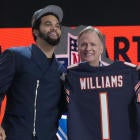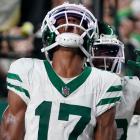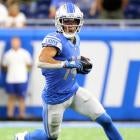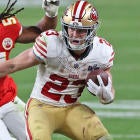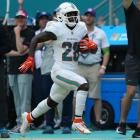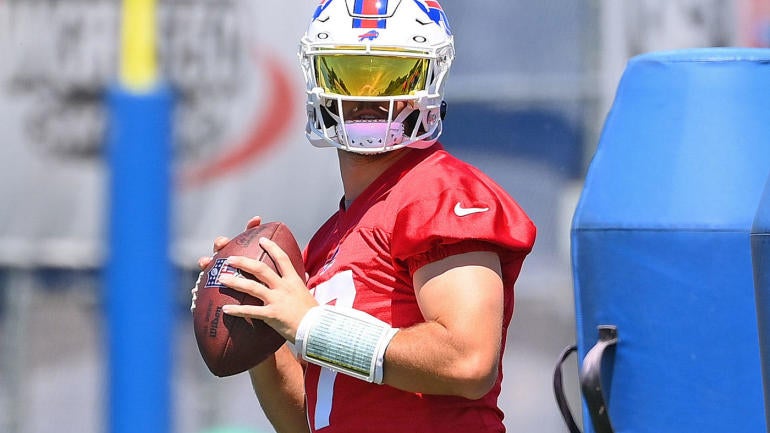
You can't magically be great at putting teams together in Salary Cap Drafts. Can't wish for it and expect it to happen.
I've been doing Salary Cap Drafts for over 20 years and I've written on strategies on how to succeed in them for about as long. I've concocted theories and created Fantasy Football cornerstones that came from my experiences, always sharing them with whoever needed them.
Don't believe me? Ask around and find out who started using tiers in Fantasy Football. See if any of them went back to 2009 like I did when I needed to find an edge to thrive in Salary Cap Drafts.
That was 14 years ago. I'm old. But I know my way around Fantasy Football and I definitely think I can help anyone -- beginners or veterans -- get better at building teams in Salary Cap Drafts.
Just remember, you can't just show up with this article 10 minutes before your draft and expect to do well. You gotta put in some work.
Want to see a mock Salary Cap Draft? Click here for our all-star mock from early August!
Pre-draft checklist
1. Know who your guys are
In a snake draft, you know who you might get based on the bazillion Average Draft Position sources on the interwebs. But in Salary Cap Drafts, anyone could get any player. If you decide you have to have Justin Jefferson, you do not need the 1.01 to do it. You just have to be prepared to spend as much as you can.
I can take it a step further: What if you wanted Justin Jefferson, Nick Chubb and Mark Andrews on the same team? Can't do that in a snake draft (probably), but you can in a Salary Cap Draft. It'll cost you (probably), but it can be done.
You can do this with premier players from a snake draft, you can do it with mid-round breakouts, you can do it with late-round sleepers. You'll really want that late-round sleeper-type list too. Heck, you could build the team of your dreams without any top-30 consensus players in ADP. Just have a squad of players who are good and have upside, but aren't the most expensive names in the game. You could get Trevor Lawrence, James Cook, Breece Hall, Mike Williams, Brandon Aiyuk, Terry McLaurin, Kyle Pitts and Christian Kirk (for the stack!) all on the same team. No way you could pull that off in a snake draft.
The point is to make a list of the players you are most passionate about. These will be the guys you'll target. There's no promise you'll get them all -- other managers will plot to get them as well -- but they're the ones you'll probably spend more for than the players you won't have on this list.
2. Build your Tiers
I consider this to be the most important part of pre-Salary Cap Draft prep. Find some great rankings (here's some) and group players by position based on your own expectations. For instance, if you think Lamar Jackson will be just as good as Patrick Mahomes and Josh Allen, but Jalen Hurts will take a step back, then your first tier for QBs will be Mahomes, Allen and Jackson. The order doesn't quite matter as much as the groupings do.
This creates your roadmap for Fantasy success. Assuming you begin the draft not bidding on players, you'll get a sense of what everyone is going for. In the example given, let's say Allen goes for $15 and Hurts (who's not even in this imaginary tier) fetches $17. You'll know that if you want Mahomes, you might have to pay $17 or more, but if you want Jackson, you should pay $15 or less. Note: this does not mean to start the bidding on either player at that price point -- start low -- but we'll get into that later.
Not only will the Tiers help you get a grip on what the going rate is on players, but they'll also alert you to when a grouping of guys is drying up. If it's a top-shelf tier then you'll know that the last player available is the last best player at his position, and you'll know pretty much what to spend on that player. This should keep you from overpaying for lineup studs -- and it might even help you land some bargains.
You can find the latest versions of my Tiers here.
3. Know how deep your pockets are
As you might assume, the best players are the most expensive. Usually you'll find quarterbacks a little cheaper than other positions, though the opposite is true if you start more than one of them. The more expensive players you land, the less you'll have in your budget for other players. If you find that there aren't a lot of players you like who have an ADP of 80th overall or later, do not plan to spend a lot of your funds on studs. On the other hand, if there are a lot of unheralded types you love, then you might be A-OK with spending big on a couple of big names because you can spend small on others.
When it's draft time!
1. The 20/50 rule
In an effort to curb crazy spending early, I encourage you to remember this rule: Save 20% of your budget for the last 50% of your draft's nominations.
An example: You're in a 12-team league with a $100 budget and you have to fill 15 spots. That means there will be 180 players nominated, and you should aim to have $20 of your original $100 left for the last 90 nominations.
This will give you enough ammo to grab a couple of bargains while at least half of your leaguemates are stuck watching you get them because they spent too much too soon. It's a wonderful spot to be in because you can gobble up anywhere from two to five players for under $5 each who might normally go for $5 or more.
2. Who you nominate matters
In a typical Salary Cap Draft, leaguemates take turns nominating players up for bid. Most of them won't have any rhyme or reason as to who they nominate, but you will:
- Your first five or six nominations should be players you do not want. Let other people bid on them. Aim for the expensive, big-name guys so that your leaguemates spend more. I suspect older players like Derrick Henry, Aaron Rodgers, DeAndre Hopkins, Mike Evans and Joe Mixon will be among the early-nominated players this year.
- After these first nominations, your remaining nominations should be players you do want. These are players you'll want to have the first bid on -- a tactical advantage. Make the nomination price one that you're comfortable with and reasonably sure no one will beat. It might mean nominating a mid-level player for exactly what you're willing to spend, or it might mean going $2 or $3 for a bench guy to deter others from spending that extra dollar or two they were hoping not to spend. The equity you give up in trying to steal a player (which is unlikely) you get back by deterring others from outbidding you.
2b. The Eisenberg Edge
Props to my colleague Jamey Eisenberg who, as far as I know, came up with strategy: Spend your first nomination on one of the best DSTs or kickers for 1% of your budget. If no one outbids you, you get a talented DST and/or kicker for the minimum. If someone outbids you then you just suckered them into spending more than they needed to for a DST or a kicker! Almost every single time, no one will outbid you. It's a great way to pick up a top-end DST or kicker when no one else thinks about getting a top-end DST or kicker.
3. When in doubt, spend the buck
Remember the last time you wanted to buy something? A car, a gallon of ice cream, it doesn't matter what, you just knew you wanted it. You might have stopped yourself from buying whatever it was if it were a lot more expensive than what you paid, but what if it was just a dollar more? Chances are you still would have bought it.
You might find yourself stressed during what is supposed to be a fun event with you and your pals. It'll especially get stressful when you're going back and forth with a leaguemate for a player, bidding him up a dollar at a time. Give yourself permission to spend the extra dollar on a player you really want. And if you really, really want him, spend the extra two or three bucks. The worst-case scenario is that you'll be a dollar short for a bench player later on; the best-case scenario is that you'll make yourself happy by getting the player you really wanted, even if it cost a tad more than you thought.
4. Don't be a Fantasy cop
Do not be the guy who insists on "price enforcing" or "making sure bids are fair" by purposely driving up bids because you think a player's going too cheap. It's a no-win situation.
If you got your starting quarterback already, be happy. Don't try to make sure someone else in the same tier goes for the same amount -- if you do, you might end up with him.
This happened to me once a lonnng time ago. I remember getting Matt Ryan, who at the time was a good Fantasy quarterback, for like $3. And it was Robert Griffin III's rookie year and I wanted to make sure he also went for close to what Ryan did because ... I don't remember why. I guess I was price enforcing like I was a rent-a-cop in a Fantasy mall! Anyway, I wound up spending $3 on RG3 and had spent too much on two good-but-not-great quarterbacks. Worse yet, both had great years but I couldn't get anything in trade for either one, so I was making annoying lineup decisions between the two of them each week. It was a disaster.
Bottom line: Bid when it benefits your team, not your ego or "the going rate." If there's a player you want at a position of need, then definitely bid. But if you're loaded with very good running backs, don't try to drive up the prices of other running backs just to make yourself feel better. You will be at a decided disadvantage if you overspend on one position because you're trying to be some kind of make-believe Salary Cap wizard. Don't do it.
Did I win???
One of my favorite exercises after a Salary Cap Draft is to cross-reference my roster to their ADPs in snake drafts.
If I had a player with a Round 1 ADP, two with Round 2 ADPs, two with Round 3 ADPs and a couple of Round 4 and 5 ADPs, I would feel great. That's a team that's better than anything I could have drafted in a regular snake draft.
If I had no Round 1 ADP players but six or seven players between Rounds 2 and 4 in ADP, I'd still feel pretty good.
If I had one Round 1 ADP player, one Round 3 ADP player, two Round 4 ADP players and two Round 6 ADP players, I'd feel like I had a lot of work to do. That would be a sign that I probably overspent. I wouldn't sleep well.
But don't be down if you aren't happy with your draft results. Instead, be ready to pounce on adding free agents and consider some trade options once the season starts. No Fantasy season is ever lost after a draft -- there are always opportunities to improve your team.
Don't worry, we'll be around to help you with that, too.














